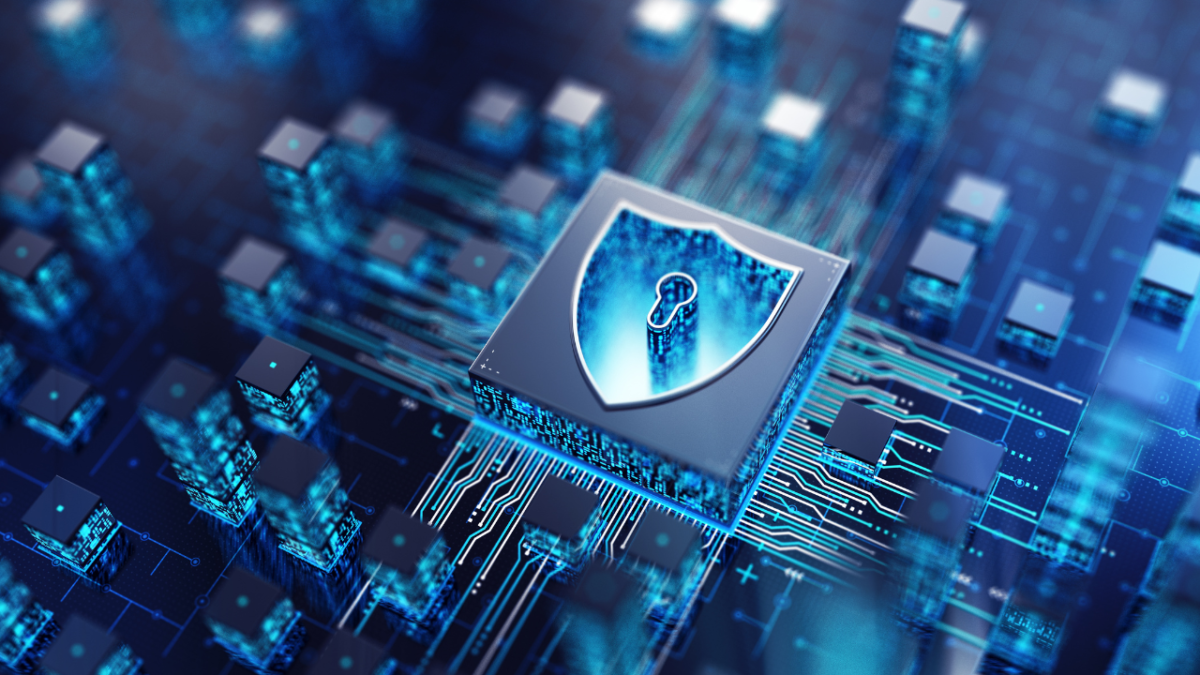Implementing a robust cybersecurity framework is crucial for organizations of all sizes and industries. With the increasing number of cyber threats and data breaches, it is essential to have a comprehensive plan in place to protect sensitive information and prevent cyber-attacks. A cybersecurity framework is a set of guidelines and best practices that organizations can follow to manage and reduce cybersecurity risks.
A cybersecurity framework typically includes policies, procedures, and technical controls to protect an organization’s information and systems from unauthorized access, use, disclosure, disruption, modification, or destruction. It involves evaluating the organization’s security posture, identifying potential risks and vulnerabilities, and implementing mitigation measures. Best practices for implementing a cybersecurity framework include:
- Conducting regular risk assessments.
- Implementing strong access controls.
- Monitoring network activity.
- Training employees on cybersecurity awareness.
Implementing a robust cybersecurity framework is not a one-time event but an ongoing process that requires continuous monitoring and updating.
Organizations should regularly review their security policies and procedures, assess their security posture, and make necessary adjustments to ensure they are adequately protected against emerging cyber threats. By following best practices and implementing a comprehensive cybersecurity framework, organizations can reduce their cyber-attack risk and protect their sensitive information from unauthorized access.
Establishing a Cybersecurity Framework
Establishing a robust cybersecurity framework is essential for any organization that wants to protect itself against cyber threats. A cybersecurity framework is a set of guidelines, best practices, and processes that organizations use to manage and mitigate cyber risks. A well-designed cybersecurity framework can help organizations identify and prioritize their cybersecurity risks, develop effective controls, and respond to cyber incidents.
Understanding the NIST Cybersecurity Framework
The National Institute of Standards and Technology (NIST) Cybersecurity Framework is widely recognized and accepted for managing cybersecurity risks. The NIST framework provides guidelines, standards, and best practices that organizations can use to manage their cybersecurity risks effectively. The framework consists of five core functions: Identify, Protect, Detect, Respond, and Recover. These functions help organizations identify their critical assets, protect them from cyber threats, detect and respond to cyber incidents, and recover from cyber attacks.
Adopting International Security Standards
Adopting international security standards is another way organizations can establish a robust cybersecurity framework. International security standards provide a common language and framework for managing cybersecurity risks. They help organizations develop a consistent approach to cybersecurity and ensure they meet the same security requirements as other organizations in their industry. Some of the most widely recognized international security standards include ISO 27001, PCI DSS, and HIPAA.
Aligning Cybersecurity with Business Objectives
Aligning cybersecurity with business objectives is essential for ensuring that cybersecurity is integral to an organization’s overall strategy. Business leaders need to understand the importance of cybersecurity and the risks associated with cyber threats. They should be involved in developing the cybersecurity framework and ensure that it aligns with the organization’s business objectives. Governance is also critical to ensuring that the cybersecurity framework is effective and that it is being implemented correctly.
In summary, establishing a robust cybersecurity framework is essential for any organization that wants to protect itself against cyber threats. Understanding the NIST Cybersecurity Framework, adopting international security standards, and aligning cybersecurity with business objectives are all critical components of a successful cybersecurity strategy. Organizations can significantly reduce their cybersecurity risks and protect their critical assets by implementing these best practices and strategies.
Identifying and Protecting Assets
Protecting assets is a critical aspect of any cybersecurity framework. To protect assets, it is essential first to identify them. Asset identification can be achieved through asset management and classification.
Asset Management and Classification
Asset management involves identifying and tracking all assets within an organization. This includes hardware, software, data, and personnel. Asset classification is the process of categorizing assets based on their value to the organization. Critical assets, such as sensitive data, should be given the highest level of protection.
Organizations should maintain an up-to-date inventory of all assets, including their classification and location. This can be achieved using asset management software or other tracking tools. By clearly understanding what assets are present, organizations can better protect them from potential threats.
Employee Training and Awareness
Employees are often the weakest link in an organization’s cybersecurity defenses. Training employees on best cybersecurity practices and raising awareness of potential threats is essential. This can include regular training sessions, phishing simulations, and other awareness campaigns.
Organizations should also have clear policies regarding using company devices and data. This can include guidelines for password management, data handling, and acceptable use. Organizations can reduce the likelihood of a successful attack by ensuring that employees are aware of their responsibilities and the potential risks.
Implementing Access Controls and Authentication
Access controls and authentication are essential components of a robust cybersecurity framework. Access controls can include physical security measures, such as locks and security cameras, and logical security measures, such as firewalls and intrusion detection systems.
Authentication is the process of verifying the identity of a user or device. This can be achieved through passwords, biometric authentication, or other methods. Organizations can reduce the risk of unauthorized access to critical assets by implementing strong access controls and authentication measures.
In conclusion, identifying and protecting assets is critical to any cybersecurity framework. Organizations can better protect their assets from potential threats by implementing asset management and classification, employee training and awareness, and access controls and authentication.
Detecting and Responding to Cyber Threats
Organizations must have a comprehensive strategy for detecting and responding to cyber threats to maintain a strong security posture. This involves continuous monitoring and detection strategies and developing an incident response plan.
Continuous Monitoring and Detection Strategies
Continuous monitoring and detection strategies are essential to quickly identifying and responding to cyber threats. This involves monitoring network traffic, user activity, and system logs for suspicious or malicious activity signs.
One effective strategy for continuous monitoring is to implement a Security Information and Event Management (SIEM) system. This allows organizations to collect and analyze data from various sources, including firewalls, intrusion detection systems, and antivirus software, to identify potential threats.
Another important aspect of continuous monitoring is maintaining visibility into the organization’s network and systems. This can be achieved through network segmentation, which allows organizations to isolate critical systems and limit the spread of malware in case of a breach.
Developing an Incident Response Plan
In addition to continuous monitoring and detection strategies, organizations must have an incident response plan to respond quickly and effectively to cyber threats. An incident response plan should outline the steps during a security breach, including who to contact, how to contain the breach, and how to recover data.
One important aspect of developing an incident response plan is conducting regular training and simulations to ensure that all employees are familiar with the plan and know what to do during a breach. This can minimize the impact of a breach and reduce the risk of data loss.
Ransomware attacks are a growing threat to organizations, and it is important to include specific procedures for responding to these types of attacks in an incident response plan. This may include isolating infected systems, restoring backup data, and contacting law enforcement.
In conclusion, detecting and responding to cyber threats is essential to maintaining a strong security posture. Organizations can reduce the risk of data loss and minimize the impact of a security breach by implementing continuous monitoring and detection strategies and developing an incident response plan.
Recovery and Resilience Post-Incident
After a cyberattack or data breach, an organization must have a well-defined plan to recover and restore its cybersecurity posture. This section will discuss the best practices and strategies for post-incident recovery and resilience.
Planning for Resilience and Recovery
A critical component of resilience and recovery is to have a plan in place before an incident occurs. The plan should identify the critical assets and data, the potential threats and vulnerabilities, and the response and recovery procedures. It should also define the roles and responsibilities of the incident response team and the communication channels with stakeholders and authorities.
To ensure effectiveness, the plan should be tested and updated regularly. The tests should simulate realistic scenarios and evaluate the response time, the procedures’ effectiveness, and the team members’ communication and collaboration. The updates should reflect the changes in the technology, the threats, and the business objectives.
Learning from Data Breaches and Cyberattacks
One of the key benefits of resilience and recovery planning is the ability to learn from past incidents and improve the cybersecurity posture. After a data breach or cyberattack, the organization should conduct a thorough post-incident review that includes the following steps:
- Identify the root cause of the incident and the vulnerabilities that were exploited.
- Assess the impact of the incident on the critical assets and data.
Evaluate the effectiveness of the response and recovery procedures and identify areas for improvement. - Review the communication and collaboration among the team members, stakeholders, and authorities.
- Implement the necessary changes to the resilience and recovery plan and the cybersecurity posture.
By analyzing previous incidents, LEAP Managed IT helps organizations in Indianapolis bolster their cyber resilience and recovery abilities, significantly lowering the chances and effects of future cybersecurity threats.
In conclusion, focusing on recovery and resilience after an incident is a cornerstone of effective cybersecurity management. With a strategy emphasizing resilience, recovery, and the insights gained from past incidents, LEAP Managed IT aids local companies with cyber security in Indianapolis businesses in enhancing their cybersecurity defenses, effectively reducing the risk of data breaches and cyberattacks.




